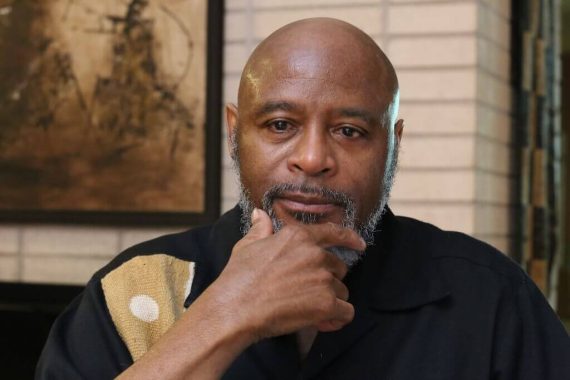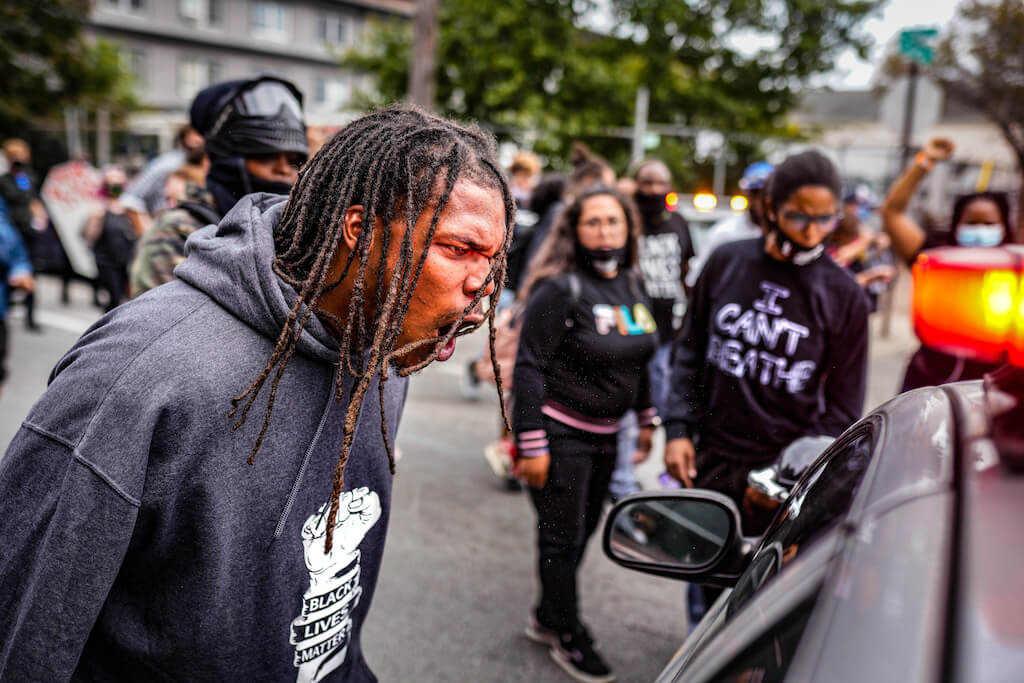There are different societal undercurrents at play in the United States today. On the one hand, there is the ongoing Black Lives Matter movement, and on the other, the growing radicalism of white-supremacist groups, who recently invaded the U.S. Capitol on January 6. Nihan Duran interviewed Sundiata Cha-Jua, Associate Professor of History at the University of Illinois on how to understand the fault lines of American society and politics given the concurrently rising movements: BLM activism and the white-supremacism.
َQHow do you evaluate the recent Black Lives Matter protests in the U.S., following the global reactions to the killing of George Floyd on May 25, 2020? Have the Black struggles for justice and equality re-surfaced as a political force in the 21st century?
The COINTELPRO destruction of the radical stream of the Black Power movement in the late 1970s produced a prolonged period of relative quietude in the Black Liberation Movement (BLM). Around 2010, the movement began to resurge. Activists introduced several tactical innovations, such as the initiation of the #hastag for organizing in response to the killing and murder of Oscar Grant and Trayvon Martin. Cell phone footage of Grant’s killing, for example, went viral on the then four-year-old YouTube platform, as it was watched by 500,000 people in four days.
Q. What impact did such a reach-out have on the acceleration of the movement?
The national response to the murder of 17-year-old Trayvon Martin in 2012 accelerated the use of online petitions as an innovative movement organizing tactic. Martin’s murder also gave rise to #hashtag BlackLivesMatter, which has also made an impact as activists used another relatively new social media format, Twitter to mobilize protests. Consequently, new organizations sprung up and older groups were reenergized. New youth-led and oriented groups such as the Dream Defenders, the former Million Hoodies Movements (now Brighter Days for Justice), and the Black Youth Project (BYP-100) emerged.
Since Michael Brown’s death at the hands of Ferguson, MO police officer Darren Wilson in 2014, a new phase of struggle in the Black Liberation movement focused on police killing and criminal justice has swept the U.S. and, in the summer of 2020, surged beyond the borders of the U.S.
Q. You have stated that new organizations have emerged, and old ones have re-energized. So, what are the internal differences between the BLM movements we have today?
Well, before the first issue of The Black Scholar rolled off the press in December 1969, among Black Power organizers, the acronym BLM stood for the Black Liberation Movement. It is subservience to the liberal wing of capital to devolve BLM to the liberal performance politics of the #BlackLiveMatters network. So, it is a misleading term to refer to the protests this summer in response to the police murders of George Floyd, Breonna Taylor, and Ahmaud Aubrey, etc as “Black Lives Matter” protests. These were largely local unaffiliated organizations or at least organizations and individuals unaffiliated with the #BlackLivesMatter Global Network, Inc. The Black Lives Matter frame is often imposed on resistance activities of any and all local Black organizations whether they self-identify under that label or not.
#Black Lives Matter, the Global Black Lives Matter Network Foundation and its affiliated chapters constitute one way to explore the resurgence of the Black liberation movement.
#Black Lives Matter, the Global Black Lives Matter Network Foundation and its affiliated chapters constitute one way to explore the resurgence of the Black liberation movement. Ostensibly organized on a decentralized, but highly coordinated model, the organization supposedly stressed locally determined grassroots activism around police murder and criminal justice. The #BlackLivesMatter that has grown into the Global Black Lives Matter Network Foundation. It seems to consist of between 30-40 chapters. More than 10 chapters are in revolt against Patrice Cullors, the executive director and sole member of its governing board and the new bureaucratic and mainstream electoral direction. The shift in emphasis involves an effort to resolve the differences between an electoral political strategy and a grassroots protest strategy by creating two new entities, a political action committee, and a grassroots wing.
Q. You mentioned that there is a “shift in emphasis.” What does that “shift” indicate when the long tradition of Black liberation movements in the U.S. is considered.
#Black Lives Matter’s slogan “we are not your grandparent’s revolution” links it to a divisive strategy more reminiscent of the Yippies, “don’t trust anyone over 30,” than the intergenerational legacy of Black liberation movement organizing. That is not to deny Frantz Fanon’s observation that “each generation must discover its mission and either fulfill or betray it.”
The point is that older more experienced activists have always played a mentoring role in the Black Liberation movement. The cutting edge of the 1960s movements, specifically the organizations, strategic visions, and political analyses still relevant come from the nationalistic Black Power wave, not the liberal integrationist Civil Rights movement.
So, the infantile divisive generational politics are doubly irresponsible, because it erases the Black Power movement. M4BL has reversed that error. It has adopted the symbolism of the Black Power movement- the fist-and centered its programmatic initiatives on a five-year plan under the slogan “Black Power Rising 2024!”

VIDEO: Why the Far-Right Is Rising Globally – Emergence
Q. You are talking about splits in the movement.
Sure. The #BlackLivesMatter struggle experienced an earlier split when DeRay McKesson, Brittney Packnett, and others broke off to form Campaign Zero. They have pursued a more explicitly reformist agenda though also one more narrowly focused on policing as the broader group expanded its interest toward transforming the police and reimagining the totality of U.S. society.
Another way to examine the resurgence is to look at the Movement 4 Black Lives (M4BL). A coalition of 50 organizations including many that emerged in the response to the killing of Martin and Brown. In a general sense, M4BL represents the basic understanding in the Black Liberation Movement that we must build unity and emphasize organizing our community over and above street theater and courting white allies.
One of the many problems, the Global Black Lives Matter Network Foundation interjected into the Black liberation movement, well actually exacerbated is the problem of the role and relationship of supporters or so-called allies. Whereas except Freedom Summer, the social movements during the last high tide of the Black liberation movement, the 1960s (1955-1978), the Civil Rights and Black Power movements, the activists engaged in protests and institution-building were nearly all Black folk, #Black Lives Matter has a significant white membership and participation in its actions, maybe 40 percent.”
Q. What does white people’s involvement in America in the BLM movement indicate?
The involvement of such a large number of Euro-Americans evidences the Black Liberation movement’s ability to convince a broad sector of the U.S. public that systemic racism accurately describes American society. However, white engagement would be better utilized if they built solidarity, created a constituency inside white communities and civic associations that practiced the politics of the Black Panther Party’s rainbow coalition. I am also quite mindful of A. Phillip Randolph’s 1940 admonishment that “where you get your money you also get your ideas and control. We need white ‘allies’ to organize support for Black self-determination, and a pro-labor, pro-socialist movement” in white neighborhoods and social spaces.
Q. Do you think that Black politics can find its way to move from merely a critical progressive to mainstream American politics?
Why not? Since the 1830s, the Black Liberation movement has demonstrated its ability to intrude into and shape U.S. politics. The Abolitionist movement, the Civil War, Reconstruction, and the Civil Rights and Black Power movement are examples of moments in which the Black Liberation movement seized the center stage and focused the eyes of the empire on us. C.L.R. James powerfully made this argument more than 70 years ago in the “Revolutionary Answer to the Negro Question” (1948).
Recommended
Since the Ferguson Uprising and particularly this past summer, Black people reaffirmed their capacity to boldly reshape both social movement and electoral politics in the U.S. Perhaps, the best example of the power of the Black Liberation to remake U.S. politics is the rise of the African American reparations movement. Before the end of the 20th century, the Black reparations movement was virtually unknown to the U.S. public.
In the last six years, the African American reparations movement has gone from a fringe movement in U.S. politics to a strategy endorsed by all leading contenders for the 2020 Democratic Party nomination, though largely through some universal policy scheme. Nonetheless, there have now been two congressional hearings and several cities have passed reparations resolutions and few, notably Evanston, Illinois, and Asheville, North Carolina have enacted legislation.
Q. You mean that politically as well, the U.S. has come to acknowledge the persistent predicament of its Black people?
Definitely. Millions of people in 200 cities, domestic and abroad took to the streets to protest the police murder of Black men, women, and children. The Black Liberation movement has forced American society to admit the existence of systemic racism, which I prefer to call racial oppression and to “commit” to its elimination from U.S. institutional life in colleges and universities, corporations, and government agencies.
Q. Despite growing awareness, what is the possibility or limitations of a “post-racial” America? Especially today, when we witness the white-supremacist undercurrent getting more and more visible both on the social and political scenery.
Sorry but the “post-racial” idea is ridiculous and odious. It is rooted in a colorblind racial ideology that denies structural racial oppression. It insidiously contrasts the success of the meager Black elite to the assumed failures of the working-class Black majority. That the election of Barack Obama sparked the rise of right-wing social movements such as the Tea Party and that his administration was followed by Trumpist fascism that used racist appeals and policies to pursue the neoliberal agenda of tax cuts, deregulation, and privatization, all exposing that the postracial ideal is fallacious.
Q. What about the U.S. Capitol siege on January 6 then? What did make this possible? Was Donald Trump the chief responsible for this or only a symptom of undercurrents?
Ultimately, we can trace the rise of contemporary fascism that culminated in the January 6 assault of the U.S. Capitol building to the economic crisis caused by the transition to a financialized global racial capitalism, but it would be a grave error to underestimate the central role played by anti-Black racial oppression. The dislocations and alienation caused by the new structure of capital accumulation is the foundational cause but Donald Trump’s rhetoric, policy agenda, and explicit xenophobic and racist appeals mobilized white supremacists and nationalists. He recruited and weaponized them into an anti-democratic battering ram against egalitarian public policies.
Q. What to expect now, after the U.S. Capital Siege? How do you think this will impact the future of U.S. domestic politics?
The Trump regime rolled the rock back and unleashed fascist hordes who now control one of the two corporate parties. The fascists are here to stay. They are likely to elect dozens, if not scores of new congresspersons and continue to control more than a score of state governments.

VIDEO: WATCH: Young people respond to racism in America
Q. What should we expect from the Biden administration?
Biden is a neoliberal and will pursue such policies while contradictorily attempting to blunt the devastation of systemic racial oppression. Initially, the Biden administration will not have a lot of space, so it will be uneven. Those of us who are interested in radical social transformation and Black liberation must be prepared to confront a regime that will skillfully use its “diversity” to justify mild reforms and to mask its continuing commitment to imperialism.
Q. Where do you see the solutions to these long-lasting problems in U.S. society and politics?
Donald Trump received 75 million votes, Republicans made significant gains in Congress, they control 27 governorships and both the governorship and the state legislature in 22 states. So, polarization exists, and it cannot be avoided if the Democrats capitulate to fascism. The U.S. needs a reckoning, not a reconciliation.
Sundiata Cha-Jua is an Associate Professor in the Department of History Departments of African American Studies, History, and Global Studies at University of Illinois, a member of the Executive Council of ASALH (The Association for the Study of African American Life and History) from 2016 to present, and a columnist, “RealTalk: A Black Perspective” The News-Gazette, Champaign, Il.






